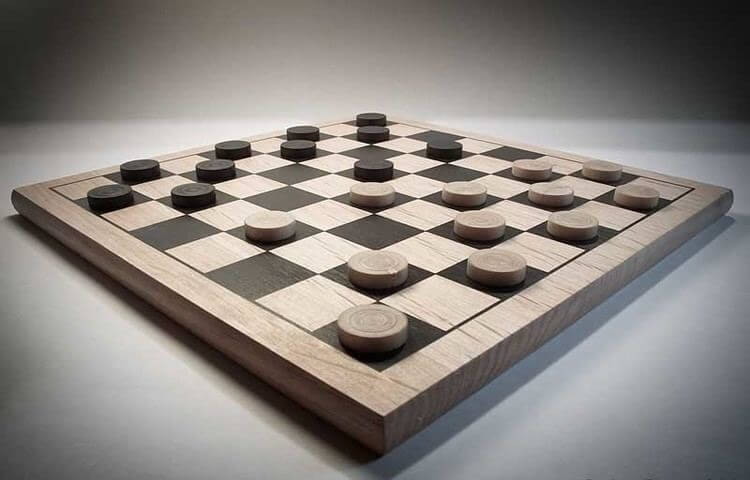Russian checkers (Shashki or Russian shashki) is the most popular type of draughts played in Russia, Eastern Europe and Israel. The goal of the game is to capture all the opponent’s pieces or prevent him to make a move.
Russian checkers board and pieces
The Russian checkers board is a 8 x 8 alternating dark and light squares, similar to the English checkers. The board is set in a way that the left corner square at the bottom of the player side is dark.
Each player has 12 pieces which can moves only in the dark squares (diagonally). If they are simple pieces they can move only forward, only the kings can move both forward and backward.
Russian checkers rules
Just like other variants of Draughts, Russian checkers are played by two opponents each one occupying the black fields of the first three rows in opposite sides. Each player have different color pieces from the other, generally black and white or red and white.
The rules of Russian checkers are:
- A simple piece can move forward, only one square diagonally.
- The King can move diagonally to any free square, backward or forward.
- Captured pieces must be removed after the completion of the move.
- If the next square to an adjacent enemy’s piece is empty, then the capture is allowed. To capture it, you have to jump over it and remove it from the game.
- If after capturing an enemy’s piece you still have an allowed a jumps move then you must continue the jump sequence (jump is mandatory).
- The jump with a simple piece is done both forward and backward.
- The king jump diagonally, both forward and backward, and after capturing, can choose which empty square lands on.
- When a simple piece reaches the final line of the enemy’s side, it become king and will be crowned.
- In a multi-jump move, the opponent’s piece can be captured only once.
- With more than one capture options, the player is free to choose which one to take.
The game ends in the following cases:
- if one of the opponents can not make any move;
- if the pieces of one of the players are all captured;
- if one of the players give up;
- if one of the players expire his time.
- In tournaments, a player lose if he violate one of the rules.
A game is a draw in the following cases:
- if one of the players offers a draw, and the opponent accepts;
- if it is impossible to win for all of the two players;
- if the same move of one player is repeated three times consecutively;
- if a player who has three kings (or more) against an opponent without any king does not take his king in 15 moves;
- if the player, having at the end of the game three kings, two kings and a simple piece, a king and two simple pieces, three simple pieces against a single king, fails to force a winning with his 5th move;
- if during 15 moves a player move only by the king(s), without moving his simple pieces and without making a capture.

